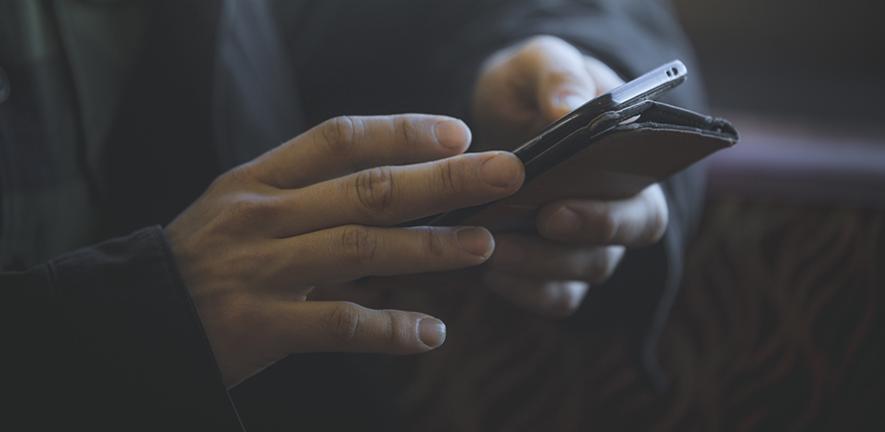
source: www.cam.ac.uk
Researchers from the University of Cambridge have analysed more than 800,000 tweets and found that negative emotions expressed about geoengineering – the idea that the climate can be altered using technology – can easily fall into conspiracy.
The researchers analysed tweets 2009 and 2021 tagged with #geoengineering. They used a combination of natural language processing, deep learning and network analysis to explore how public emotions, perceptions and attitudes have changed over a 13-year period.
The researchers found that there is a large amount of ‘spillover’ between geoengineering and conspiracy theories, especially around ‘chemtrails’, a conspiracy theory dating back to the 1990s. The researchers suggest that negative emotions related to geoengineering have a contagion effect, transcending regional boundaries and engaging with wider conspiracies. Their results are reported in the journal iScience.
As the climate crisis worsens, the search for solutions has accelerated. Some potential, albeit untested and controversial, solutions involve geoengineering, where various technologies could be used to alter weather or climate. Solar radiation management (SRM) is one hypothetical geoengineering solution where temperature rise might be addressed by reflecting some sunlight back into space. Possible forms this technology could take include cirrus cloud thinning or spraying aerosols into the stratosphere. But there are few, if any, opportunities for researchers to test these potential solutions.
“The amount of funding that’s been made available for geoengineering research, and especially outdoor experiments, is tiny,” said first author Dr Ramit Debnath, Cambridge Zero Fellow at the University of Cambridge. “When you ask funders why this is, the reason often given is that the research is too controversial.”
“There are significant and well-founded concerns around geoengineering, but fundamentally we’re interested in furthering knowledge in this area,” said senior author Dr Shaun Fitzgerald, Director of the Centre for Climate Repair in Cambridge’s Department of Engineering. “In order to do that, we need to have more informed discussions. We don’t want to dismiss any concerns expressed on social media, but we do want to put them into context.”
“The views expressed on social media don’t necessarily translate directly into wider public views, but there is still a lot we can learn by studying conversations that are happening,” said Debnath. “We wanted to know whether people who were tweeting about geoengineering were in fact, a vocal minority, and if so, what else are these people talking about?”
The researchers analysed a large dataset of more than 800,000 English-language tweets sent in the 13-year period between 2009 and 2021. The researchers used natural language processing techniques to analyse the emotions expressed in the tweets and assigned each tweet a ‘toxicity score’. The researchers then conducted a network analysis to determine how tweets about geoengineering interact with other hashtag networks and conspiracy theories.
“The chemtrail conspiracy theory is particularly popular among conspiracy theorists based in the United States, and our analysis found that tweets about chemtrails are the common link between geoengineering and conspiracies,” said Debnath. “Most of these tweets are sent by American users, but they spill over across regional and national boundaries.”
The ‘chemtrail’ conspiracy theory dates back to the 1990s. Believers in this patently false conspiracy allege that condensational trails (contrails) from aircraft are intentionally seeded with various chemical or biological compounds for nefarious purposes including population control or military testing. Those who believe the chemtrails conspiracy theory also allege that aircraft could be used for intentional weather and climate modification.
The researchers say that the common link between the chemtrails conspiracy and conspiracy theories around geoengineering is the idea that bad actors are ‘weaponising’ the weather with chemicals.
Their analysis also showed that positive emotions rose on global and country scales following events related to SRM governance, and negative emotions increased following the announcement of SRM projects or experiments.
The researchers say their work could help inform future discussions around SRM and other forms of geoengineering by putting social media discussions in context. “It’s a small echo chamber, but it’s quite a noisy one,” said Debnath.
While the controversy around geoengineering will continue on social media, the team says what they really need is quality data and research. “There are risks associated with geoengineering, but how do these compare with the risks of letting climate change continue unabated?” said Fitzgerald. “I worry that knowledge hasn’t progressed in this area. What happens if some rogue entity decides to go for a huge deployment of SRM, and people end up suffering because of it? This is why it’s so important to have informed discussions backed up by quality research.”
The researchers say their study provides a data-driven glimpse into the structure of online climate misinformation that has a strong contagion effect, leading to strengthening of conspiracy theories in the public domain. Understanding such links with respect to climate action is critical for the design of counteraction strategies.
The research was supported in part by the Bill and Melinda Gates Foundation, the Cambridge Centre for Climate Repair, Cambridge Zero and Quadrature Climate Foundation, and the Google Cloud Climate Innovation Challenge Award. This study is part of an ongoing project co-led by Dr Ramit Debnath with Cambridge Zero on improving public understanding of climate change.
Ramit Debnath will be speaking about climate change misinformation at the Cambridge Festival on 30th March.
Reference:
Ramit Debnath et al. ‘Conspiracy spillovers and geoengineering.’ iScience (2023). DOI: 10.1016/j.isci.2023.106166
The text in this work is licensed under a Creative Commons Attribution 4.0 International License. Images, including our videos, are Copyright ©University of Cambridge and licensors/contributors as identified. All rights reserved. We make our image and video content available in a number of ways – as here, on our main website under its Terms and conditions, and on a range of channels including social media that permit your use and sharing of our content under their respective Terms.